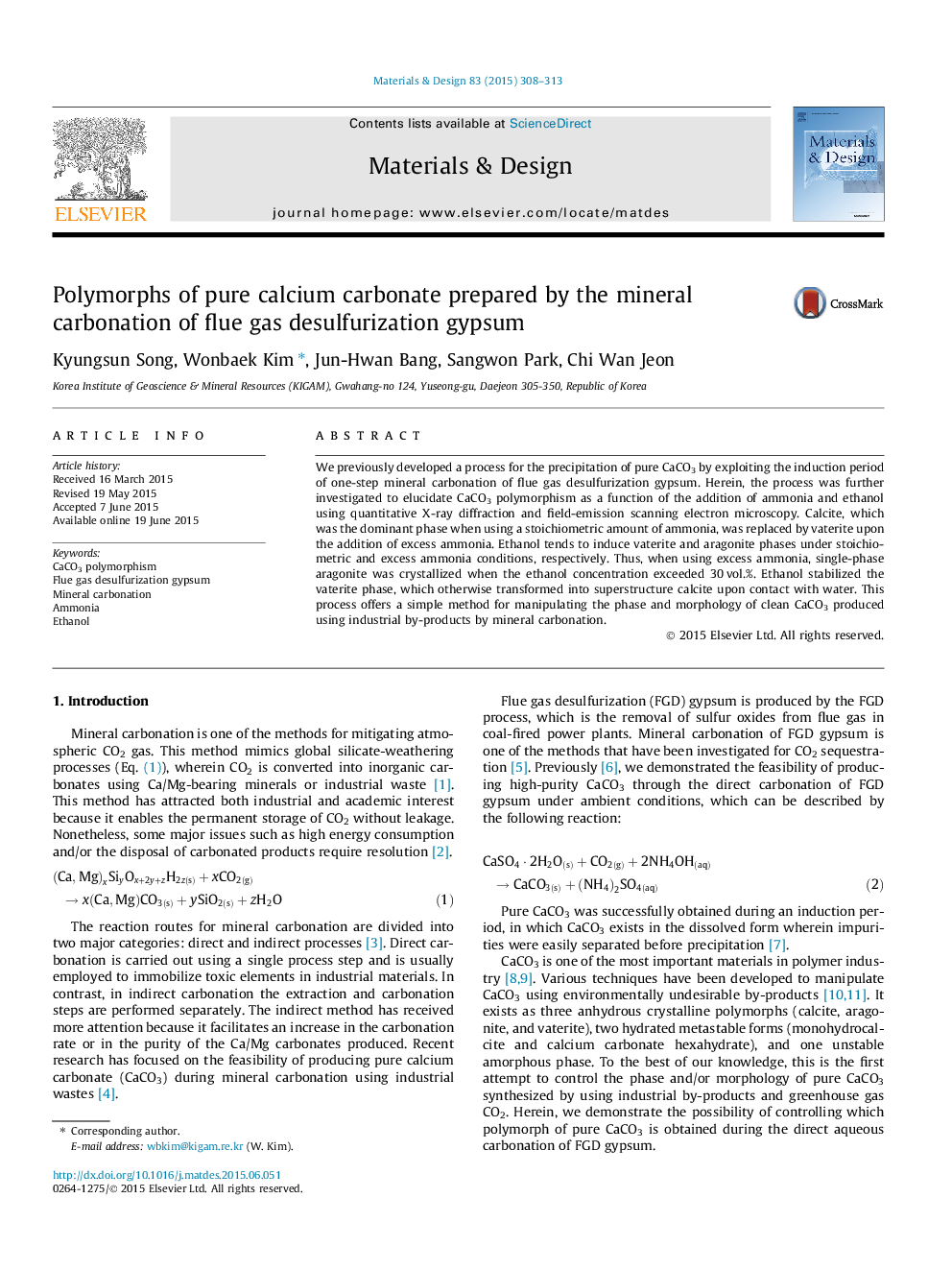| Article ID | Journal | Published Year | Pages | File Type |
|---|---|---|---|---|
| 828440 | Materials & Design | 2015 | 6 Pages |
•Waste gypsum was used to synthesize pure CaCO3.•Induction period was exploited to separate impurities.•The phase and morphology of CaCO3 were controlled by adding ethanol.
We previously developed a process for the precipitation of pure CaCO3 by exploiting the induction period of one-step mineral carbonation of flue gas desulfurization gypsum. Herein, the process was further investigated to elucidate CaCO3 polymorphism as a function of the addition of ammonia and ethanol using quantitative X-ray diffraction and field-emission scanning electron microscopy. Calcite, which was the dominant phase when using a stoichiometric amount of ammonia, was replaced by vaterite upon the addition of excess ammonia. Ethanol tends to induce vaterite and aragonite phases under stoichiometric and excess ammonia conditions, respectively. Thus, when using excess ammonia, single-phase aragonite was crystallized when the ethanol concentration exceeded 30 vol.%. Ethanol stabilized the vaterite phase, which otherwise transformed into superstructure calcite upon contact with water. This process offers a simple method for manipulating the phase and morphology of clean CaCO3 produced using industrial by-products by mineral carbonation.
Graphical abstractFigure optionsDownload full-size imageDownload as PowerPoint slide
